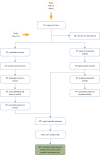Child concussion recognition and recovery: a community delivered, evidenced-based solution
- PMID: 32566622
- PMCID: PMC7290523
- DOI: 10.21037/atm.2020.03.50
Child concussion recognition and recovery: a community delivered, evidenced-based solution
Abstract
Pediatric concussion is a growing health concern. Concussion is generally poorly understood within the community. Many parents are unaware of the signs and varying symptoms of concussion. Despite the existence of concussion management and return to play guidelines, few parents are aware of how to manage their child's recovery and return to activities. Digital health technology can improve the way this information is communicated to the community. A multidisciplinary team of pediatric concussion researchers and clinicians translated evidence-based, gold-standard guidelines and tools into a smartphone application with recognition and recovery components. HeadCheck is a community facing digital health application developed in Australia (not associated with HeadCheck Health) for management of concussion in children aged 5-18 years. The application consists of (I) a sideline concussion check and (II) symptom monitoring and symptom-targeted psychoeducation to assist the parent manage their child's safe return to school, exercise and sport. The application was tested with target end users as part of the development process. HeadCheck provides an accessible platform for disseminating best practice evidence. It provides feedback to help recognize a concussion and symptoms of more serious injuries and assists parents guide their child's recovery.
Keywords: Brain concussion; mobile application; pediatrics; post-concussion symptoms.
2020 Annals of Translational Medicine. All rights reserved.
Conflict of interest statement
Conflicts of Interest: All authors have completed the ICMJE uniform disclosure form (available at http://dx.doi.org/10.21037/atm.2020.03.50). VA reports other from Australian Football League, grants from Royal Children’s Hospital Foundation, during the conduct of the study. VCR reports other from Australian Football League, grants from The Royal Children’s Hospital Foundation, during the conduct of the study. GD is a member of AFL Concussion Working Group. NA reports other from Australian Football League, grants from The Royal Children’s Hospital Foundation, during the conduct of the study. AP reports other from Australian Football League, grants from The Royal Children’s Hospital Foundation, during the conduct of the study. PC reports other from Australian Football League, outside the submitted work. PH reports other from Employed by AFL, during the conduct of the study; other from AFL A/A, outside the submitted work. The other authors have no conflicts of interest to declare.
Figures
References
-
- McCrory P, Meeuwisse W, Dvorak J, et al. Consensus statement on concussion in sport—the 5th international conference on concussion in sport held in Berlin, October 2016. Br J Sports Med 2017;51:838-47. - PubMed
LinkOut - more resources
Full Text Sources





